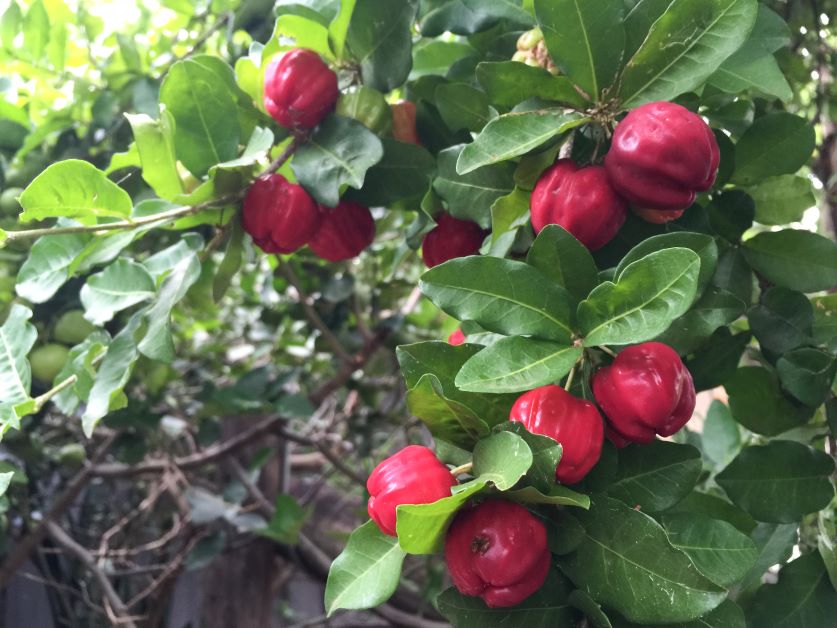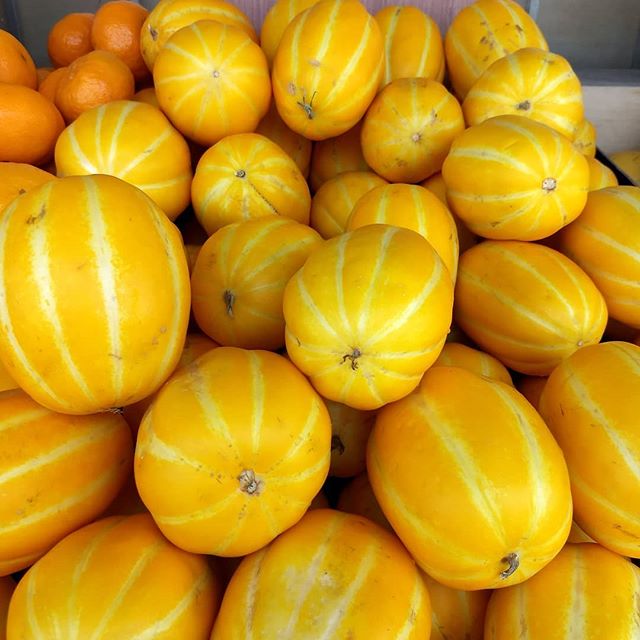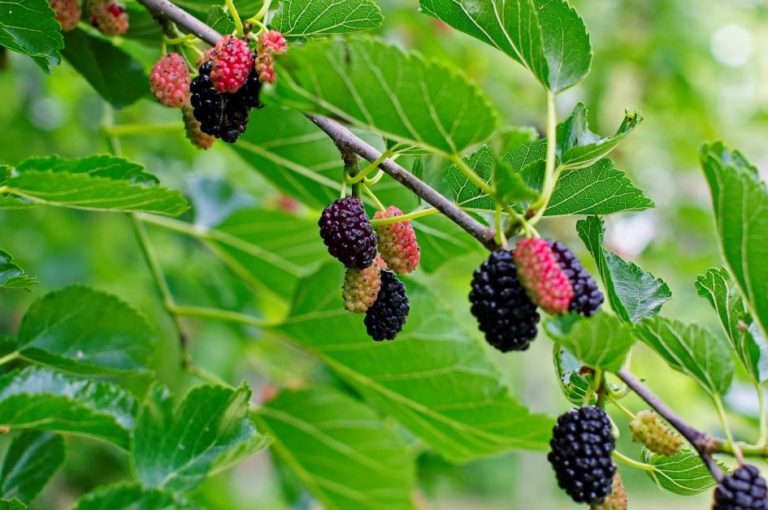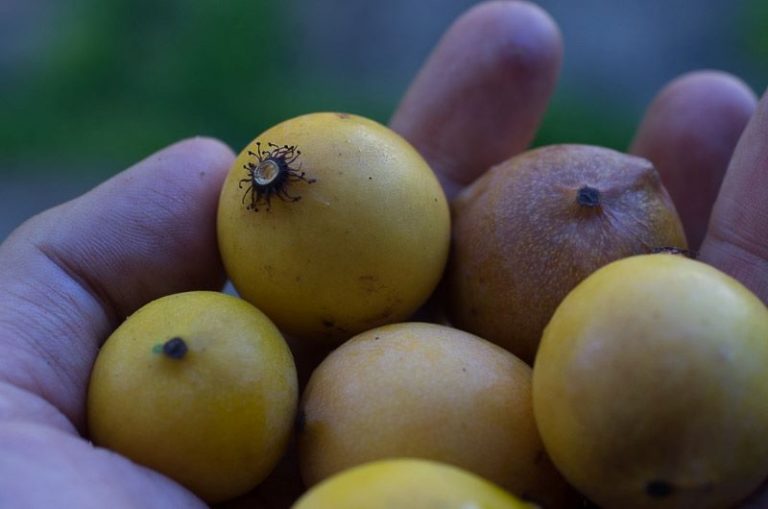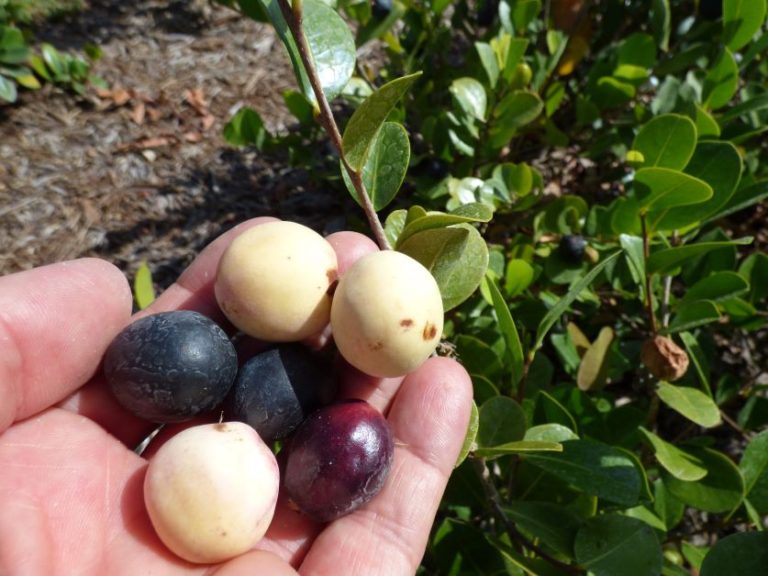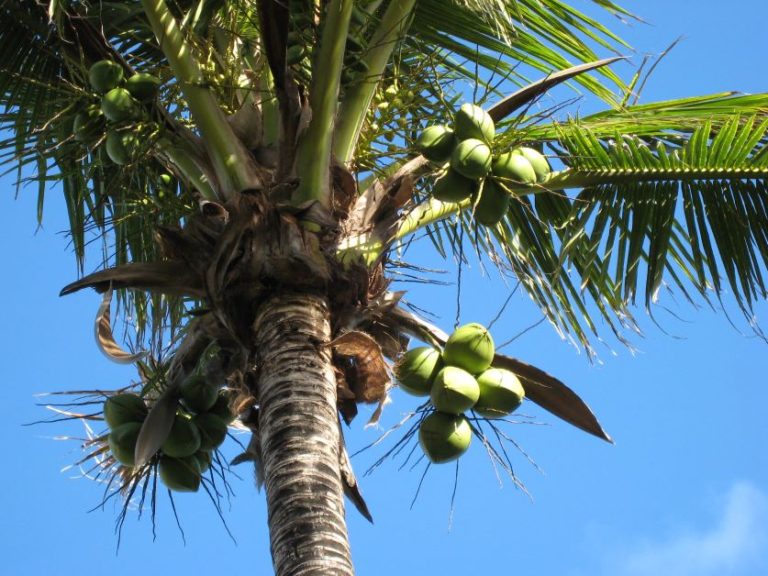How to Grow a Barbados Cherry Tree
Last updated: May 12, 2022
I grew up in Michigan, where growing cherries is kind of a big deal. Michigan produces 70% of the country’s tart cherry supply. We have even have festivals devoted to cherries up there in the great white north. Michiganders and cherries go together like pasties and Vernors.
When I moved to Florida and got into gardening, I decided that I’d grow my own cherry tree. I wanted to bring a little bit of home down to the subtropics, not to mention that cherries are so friggin’ expensive at the grocery store.
Well, ope. As it turns out, you can’t grow cherries in Florida. It’s too hot. You can grow the Barbados cherry tree, though, which is sorta like a cherry replacement that does thrive in the heat and humidity.
What is a Barbados Cherry?
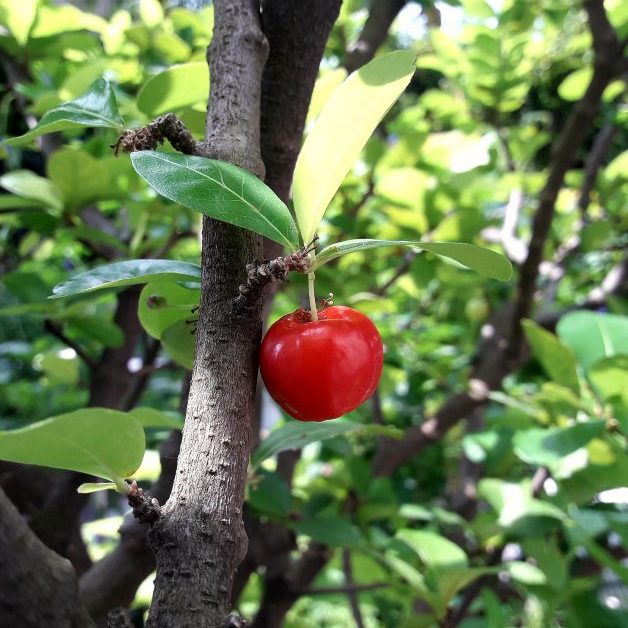
The Barbados cherry (Malpighia emarginata) is not a Florida native fruit. Instead, this tropical plant is native to South America, parts of Mexico, Puerto Rico, the Dominican Republic, Haiti, Brazil, and Central America. Also called acerola cherry and the West Indian cherry, this fruit is famous for its insanely high content of vitamin C. It’s a relative to the peanut butter fruit tree.
There are a few things that make the Barbados cherry different than more common varieties like Bing and Rainer.
Barbados cherries are tart, not super sweet, and taste a little bit like an apple. They have three seeds inside instead of one pit. Barbados cherries also don’t keep well and need to be eaten within a few days after picking. That means you won’t find them at the grocery store.
How to Grow a Barbados Cherry Tree
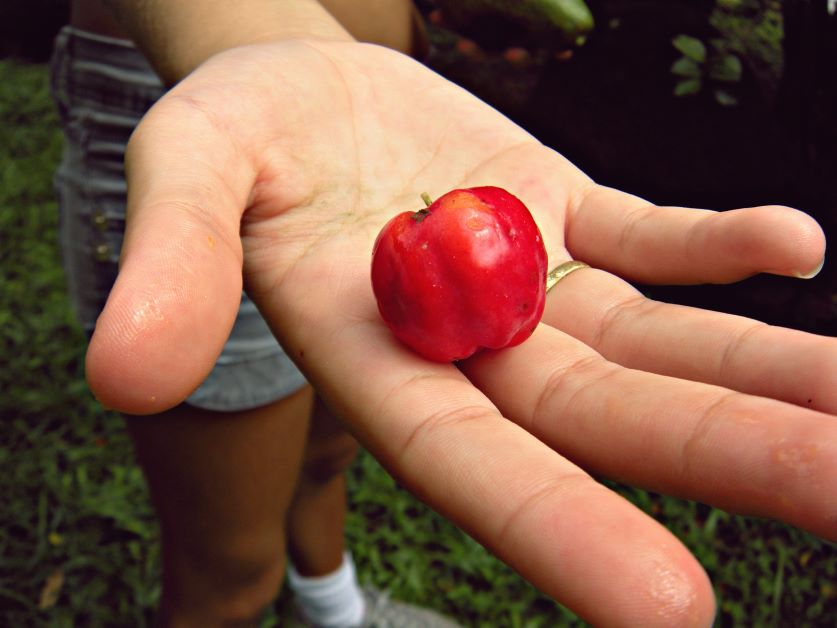
It’s hard to grow Barbados cherry from seed – they take forever to germinate (more than 6 months) if they germinate at all. Most people choose to buy a Barbados cherry as a live plant and transplant it into their garden.
If want to try to grow a Barbados cherry from seed, fill a starter tray with high-quality potting mix. Plant more seeds than you think you’ll need and bury them about ¼ inch deep. Keep the soil warm and damp but not soggy. Finally, make sure it gets plenty of sunlight.
After the seedling sprouts and has a couple of leaves, then transplant it into a bigger container. Gradually step it up into progressively bigger containers as it grows until it’s hearty enough to put into the ground.
You can also grow Barbados cherry from cuttings. Cut a 4 to 6-inch-long branch from the plant at a 45-degree angle. Pluck off the leaves from the bottom third of the branch and dip the cut end into rooting hormone. Stick your branch into a container filled with potting mix and water it in.
Barbados Cherry Tree Care
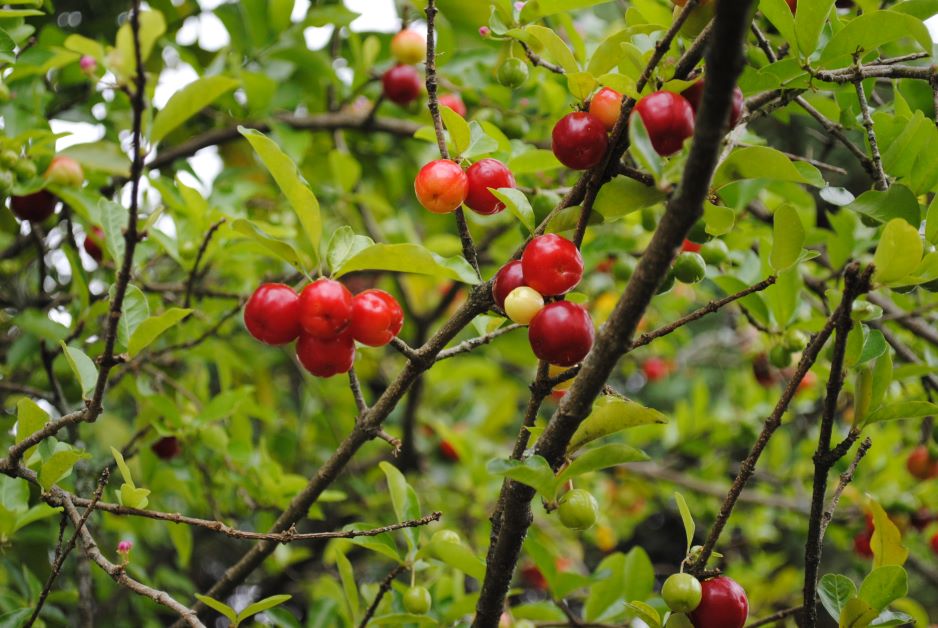
Light
Barbados cherries grow in full sun to part shade. The more sun it gets, the more fruit you’ll get.
Temperature
Barbados cherries are frost-sensitive and they need a lot of heat and humidity to thrive. Mature plants can handle the occasional drop to 28F, but they suffer in the cold. If you’re expecting prolonged temperatures around 30F, cover your Barbados cherries with a frost blanket. to protect them.
Water
Once established, Barbados cherry is drought-tolerant. You’ll need to water it more often for the first few weeks after transplanting and while it’s young. The most important thing is to avoid overwatering. Keeping the soil soggy will cause root rot.
In Florida, you’ll probably only need to water your established Barbados cherry during the winter months. It does need more water during the summer when it’s fruiting, but that also happens to be our rainy season.
Soil
Like a lot of tropical plants, Barbados cherry isn’t overly picky about its soil as it’s well-draining. Loamy soil is ideal, but it’ll also do fine in sandy soil or soil with a little bit of clay, too.
When planting your Barbados cherry, mulch it with grass clippings or composted leaves. This can help prevent nematodes, which can be a problem pest for this plant.
Barbados cherry needs slightly acidic soil to produce the highest yield. Use a soil testing kit and aim for A pH of 5.5 to 6.5.
Spacing
If you’re planting your Barbados cherry in the ground, give it at least 10 feet of space between other plants and buildings.
Fertilizing
For the first 10 years of growth:
In February, feed 10-10-10 fertilizer in the amount of 1lb per age of the tree. For example, your tree is 2 years old, so you’d feed it 2lbs.
In May, July, and September, feed 5-5-5 in the amount of 1lb per age of the tree.
After 10+ years of growth:
In late winter, feed 5lbs of 6-4-6 fertilizer* per tree.
In summer, feed 10lbs of 6-4-6 fertilizer per tree.
*If you can’t find 6-4-6 fertilizer, then 6-4-5 will work.
Pruning
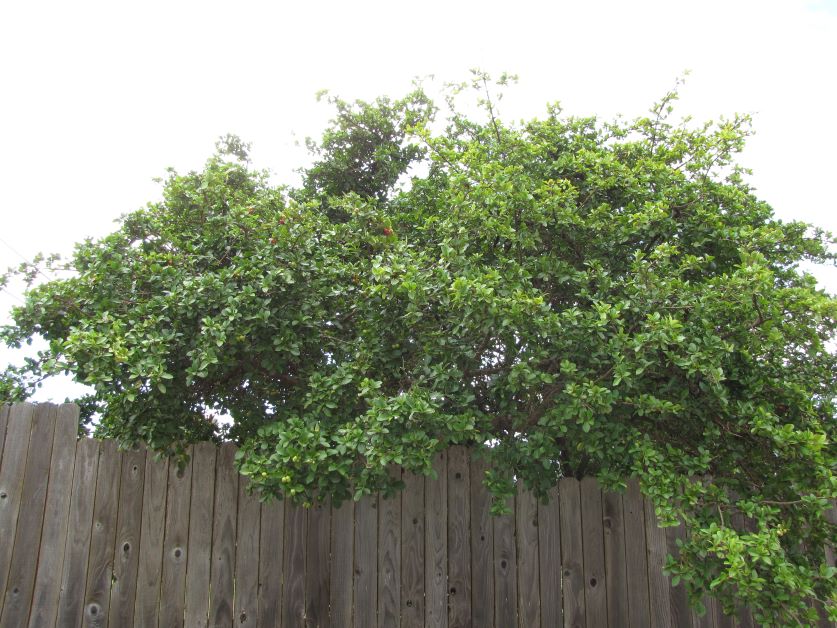
Depending on your pruning technique, you can grow Barbados cherry as either a shrub or a tree.
To have a shrub-like Barbados cherry, keep your plant trimmed shorter and allow the sides to fill in.
If you want your plant to grow more like a tree, trim the extra side shoots and branches from the main stem to encourage vertical growth.
You should wait until fall or winter to prune, otherwise, you will prune off cherries during the fruiting season. Barbados cherry leaves are also a skin irritant, so be sure to wear gardening gloves when you’re pruning or harvesting.
When is Barbados Cherry Season?
In Florida, Barbados cherries flower in early spring and the harvest season is from May to November.
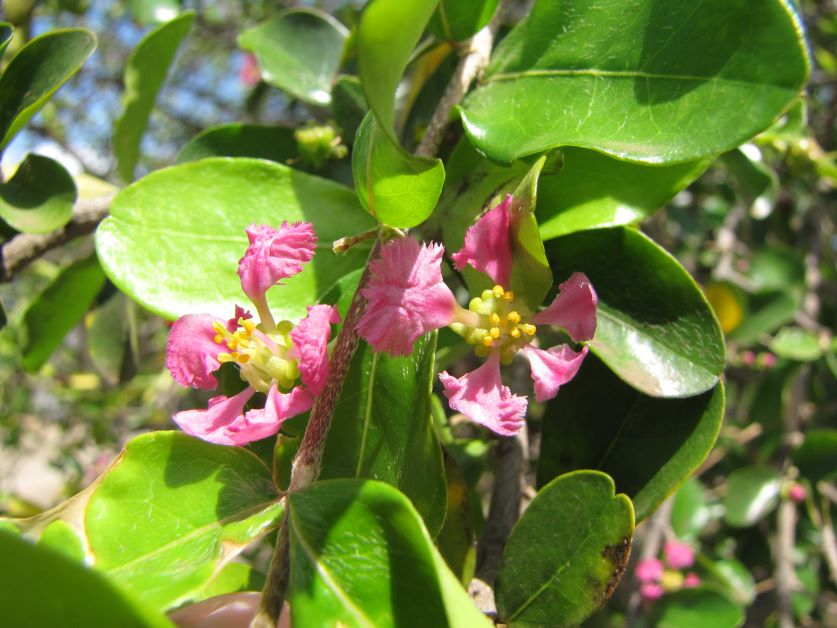
Can You Grow Barbados Cherry in Containers?
Yes! As long as the pot is big enough, Barbados cherry grows well in containers. Gardeners outside of hardiness zones 9-11 have to plant their Barbados cherry in a container so that they can bring it inside during winter. A 10-gallon pot with plenty of drainage will work.
Barbados Cherry Troubleshooting
Pests
Root-Knot Nematodes
The most common pest for the Barbados cherry is the root-knot nematode. Parasitic nematodes are hard to spot because they live in the soil and feed on the roots of your plant. Some signs of root-knot nematodes are:
- Stunted growth
- Wilting
- Uneven growth
- Plant is unhealthy but no obvious signs of pests or disease
Mulching your Barbados cherry with organic matter is the best way to prevent nematodes. If you find yourself warring with nematodes even after mulching, try an organic nematode control spray.
Scale

Some species of scale are attracted to Barbados cherry. A severe infestation is hard to tackle and can lead to a dead plant, so take action at the first signs of scale. Signs of scale include:
- Yellowing and dropping leaves
- Hard oval-shaped growths on your plant (these are actually the scale bugs)
- Sticky, clear sap on your plant (this is called honeydew and is what the scale bugs secrete)
- Sooty mold (a fungal disease caused by excess honeydew. It looks just like it sounds – black soot on leaves and stems)
You can remove scale by gently scrubbing them off your plant or by dabbing them with rubbing alcohol.
DIY Neem oil spray solution can also help with scale. Mix 1 teaspoon of organic, cold-pressed Neem oil and ¼ teaspoon of Castile soap into 1 quart of water. Using a hand pump, spray the solution onto your infested plant.
Fruit Flies
If you find white maggots in your cherries, you can bet that you have fruit flies. This pest lays their eggs inside your cherries and once they hatch, the larvae (maggots) work their way out.
Rotting and overripe fruit attracts fruit flies, so it’s important to pick your cherries as they ripen and pick fallen cherries off the ground.
Diseases
Anthracnose
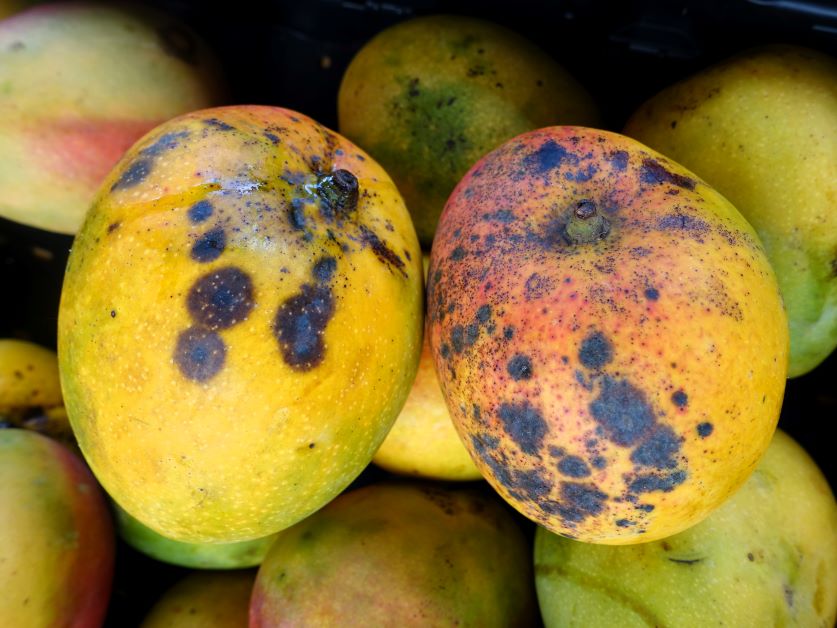
Anthracnose is a fungal disease common in the subtropical garden because of the high heat and humidity.
Signs of anthracnose include:
- Brown or black spots on leaves
- Leaf curling
- Loss of foliage
The best defense against fungal disease is prevention. Increase airflow by keeping your plants pruned and by using a water wand to water your plant at the base. Watering the leaves of your plants is a sure-fire way of breeding anthracnose and other fungal diseases.
What to Do With Barbados Cherries?
Barbados cherries don’t store well, so most people eat them by the handful as they’re harvested. You can preserve them by making jam, which will help cut their tartness. Using them in desserts like pie will also make them more tolerable for those people who find the fruit to be too sour. Barbados cherries can be juiced or used to make wine.
Barbados Cherry Health Benefits
Barbados cherries have 50 to 100 times more vitamin C than oranges or lemons. In fact, the only other fruit that has more vitamin C is the Amazonian berry camu camu, which is too tart for most people to eat in its natural state.
Vitamin C helps protect your cells and skin. It’s also an antioxidant, which means it helps prevent damage from cancer-causing free radicals. Your body can’t make vitamin C on its own, so you have to get it from your diet.
Studies conducted in mice also show that Barbados cherry may be effective in fighting obesity, liver disease, and skin pigmentation problems.
Overall, the health benefits of Barbados cherry make it a superfood. It’s important to note that too much vitamin C can cause stomach upset and diarrhea, so enjoy this fruit in moderation.
First photo credit: Rogerio de Silva
Disclaimer : I get commissions for purchases made through links in this post.

